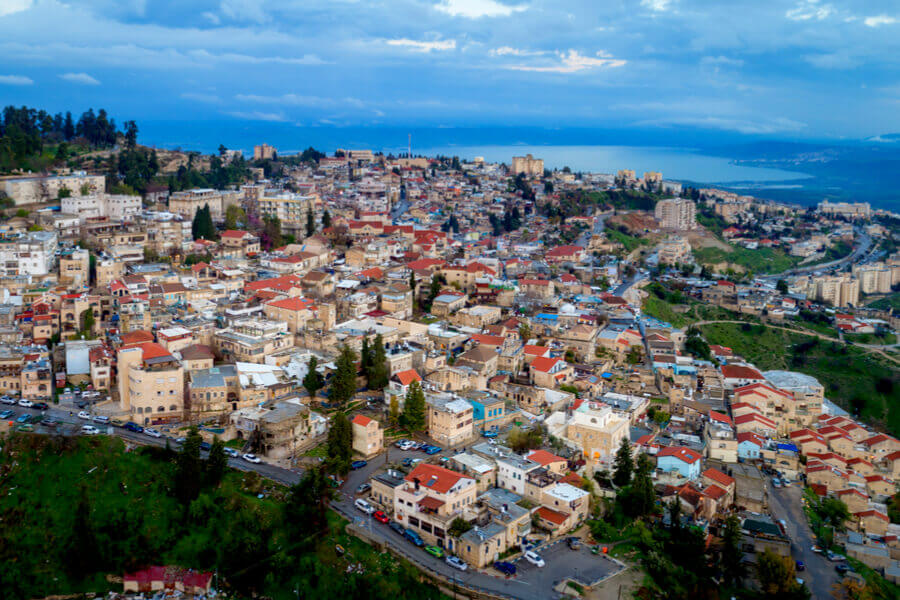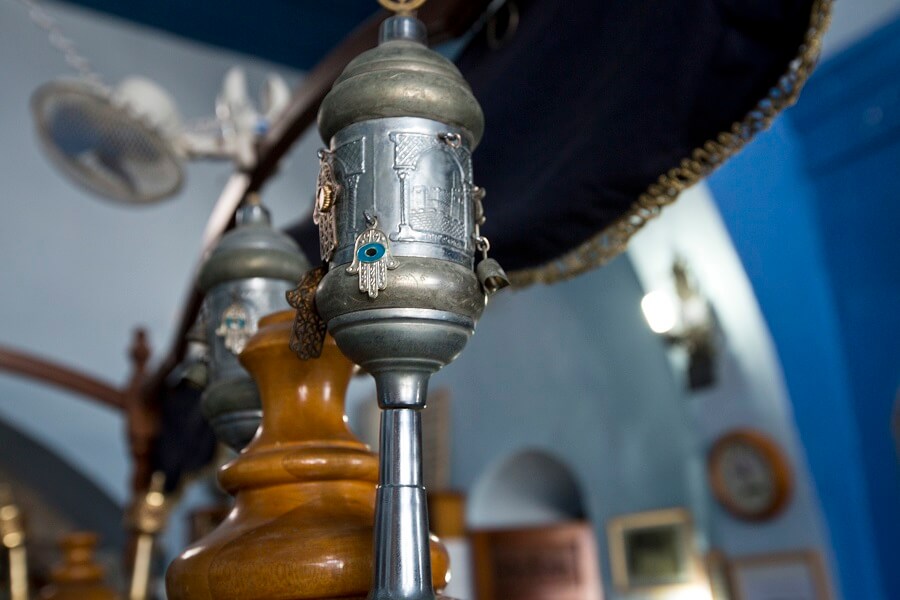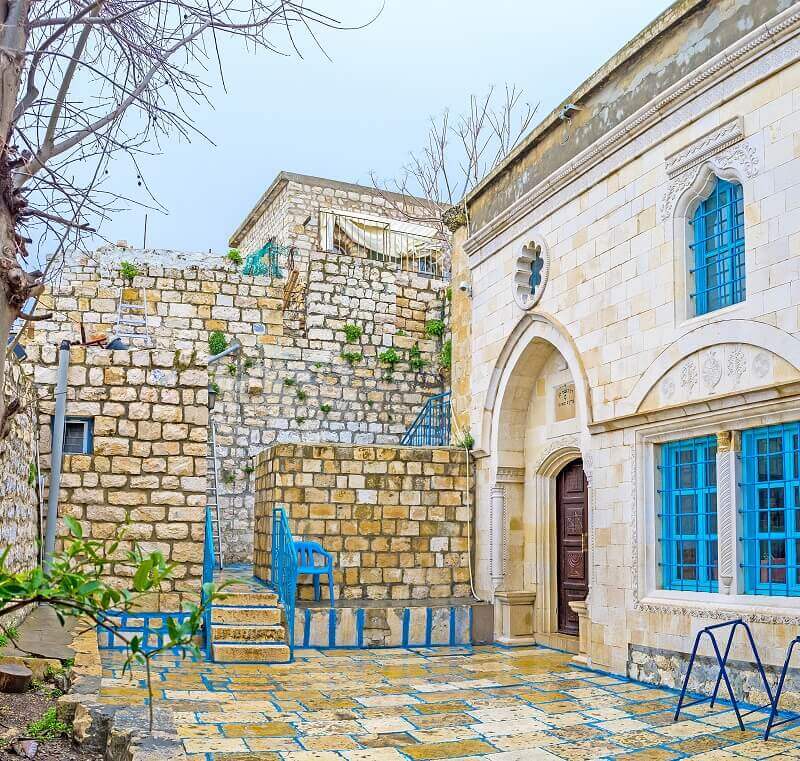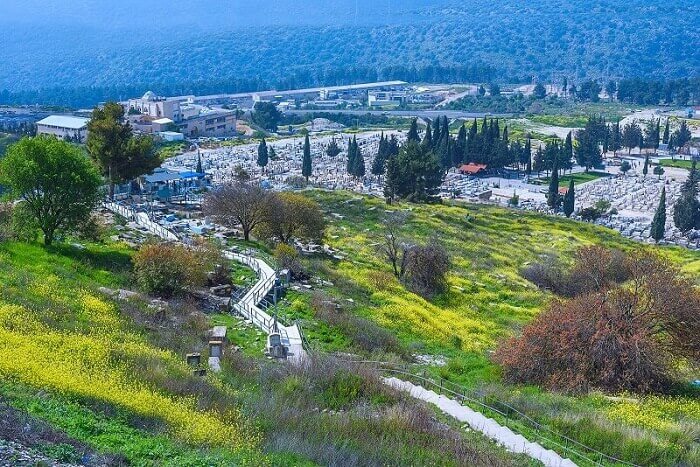The Mountain Top City of Safed
Safed (Tsfat) is often overlooked by tourists but is another fascinating corner of this amazing and diverse country. The mountain top city of Safed in the Galilee is known as the birthplace of Kabbalah, the ancient mystic side of Judaism. The city is in the clouds perched 900 meters above sea level; it has a spiritual and mysterious atmosphere, old synagogues, and is steeped in history. Its location offers gorgeous mountain views, the weather is mild and there is even snow in Safed in the winter.
Galilee landscape near Safed. Photo credit: © Shutterstock
The History of Safed
A legend tells us that Safed was established by the son of Noah after the flood. During the Roman era, it was a fortified Jewish town and it is mentioned in the Jerusalem Talmud as one of five elevated locations where bonfire would be lit to announce the timing of the new moon and festivals during the Second Temple era.
The city was a Crusader city in the 12th century and the site of the largest Knights Templar fort in the Middle East. In the 13th century, the Egyptian Mamluk Sultan Beibars took the mountain top city but a community of Jews remained further down the mountain. The Muslim city grew and new structures were built; this continued into the Turkish Ottoman era when Safed was the capital of the Safed Sanjak (district). The Seraya Ottoman fortress has survived.
After the expulsion of the Jews from Spain in 1492 many respected rabbis settled in Safed including Kabbalists Moshe Kordovero, Shlomo Halevi Alkabetz, Isaac Luria, and Joseph Caro. During the 16th century, Safed became known as the center of Kabbalah thanks to the many learned Jewish scholars in the town and Safed’s close proximity to the area where Rabbi Shimon Bar Yochai (Rashbi) wrote the Kabbalistic Book of Zohar.

Safed street. Photo credit: © Dmitry Mishin
Although still a Muslim town there was a strong Jewish community. In 1577 a Hebrew printing press was established in Safed and there were 32 synagogues in the town. Safed was affected by an earthquake in 1759 and again in 1837 and the town also suffered at the hands of Druze rebels and the plague. Moses Montefiore visited Safed several times and helped finance the repair of the town.During the British Mandate Jews and Arabs continued to live in Safed under tense relations. By 1948 and the establishment of the Jewish state Safed was home to about 1,700 Jews and about 12,000 Arabs. A battle ensued when the Muslim Arabs attacked the Jewish Quarter; after an intense conflict the Jews prevailed and almost all the Safed Arabs fled.
In the 50s and 60s, the city became known for its artists’ colony; Jewish artists from around the world settled here to enjoy inspiration from the beautiful scenic surroundings and spiritual atmosphere. In the 2000s many Ethiopian and Russian Jewish immigrants settled in Safed joining the predominantly Ashkenazi Jews and adding to the diverse culture of the city. The city remained a place of religious learning and spiritual enlightenment and has a community of both religious and secular Jews as well as small Russian Christian and Maronites communities.

The city of Safed, overlooking the Sea of Galilee. Photo credit: © Shutterstock
What is Kabbalah?
Kabbalah is a Jewish discipline and school of thought consisting of esoteric teachings intended to explain the relationship between man and God; the nature of the universe and the meaning of existence. It is the philosophical study of the nature of being through Jewish writings; the origin of evil; the role of man; reincarnation and the concealed and revealed God. Kabbalah has become more widely known in recent years thanks to well-known followers like Madonna and Justin Kuchner.
Visiting Safed
Any visit to Safed should start at the Tourist Information Center on Alkabetz Street. The center provides information to tourists as well as hosting several impressive exhibits and an introductory film about Safed. The Tourist Center encompasses excavated homes from the 1500s which are open to the public for free.
The Old City of Safed is built of stone similar to Jerusalem with narrow cobbled lanes flanked by stone houses. There are ornate arched entrances to the homes, colorful wooden shutters on the windows, bright window boxes, domed ceilings, and other features reminiscent of a Spanish Kahal (Spanish Jewish Quarter) of the Middle Ages.
The Safed Artists’ Quarter consists of several lanes with artists’ studios, stores, and galleries. Most of the artwork is inspired by the Kabbalah, Torah, or the general spiritual feel of the city. The works include paintings, drawings, textiles, metalwork, and sculptures. There are also handmade candles, religious items, Judaica, glassware, handmade musical instruments, and microcalligraphy where a picture is created using minute Hebrew letters and texts from the Bible as the lines and shapes in the design.

At Safed Synagogue, the Old City of Safed, Israel. Photo credit: © Shutterstock
Safed’s has two famous synagogues with similar names both of which are top tourist attractions. The Ari Synagogue is named after Rabbi Isaac Luria (The ‘Ari Hakadosh‘) who arrived here in 1570 and developed the Lurianic Kabbalah which teaches that secrets embedded in the Torah can reveal how to strengthen our relationship with God and our fellow man. The synagogue has a small alcove where the Ari is believed to have sat and studied with the spirit of the Prophet Elijah.The Gerigos Synagogue was built by Spanish Jews who had adopted Christianity under duress during the Spanish inquisition and arrived in Safed via the Greek island of Gerigos. On arrival in Safed, they were not readily accepted by Safed Jews and built their synagogue on the outskirts of the city. The Ari would come to the field next to the Gerigo Synagogue to sing Psalms on a Friday afternoon welcoming the Sabbath.
Following Ari’s death, the Gerigos Jews were accepted into the Jewish community and their synagogue was renamed Ari Ashkenazi after Ari’s Ashkenazi mother. The Ari Ashkenazi Synagogue holds the precious Elijah’s Chair where traditionally the godfather would sit during a baby’s circumcision ceremony.

Abuhav Synagogue, Safed. Photo credit: © Shutterstock
Tradition holds that if an infertile couple sits on the chair they will be blessed with a child within the year. The Joseph Caro Synagogue is named after Rabbi Joseph Caro a 15th-century Spanish exile who had settled in Safed. He is believed to have been charged by God with the task of compiling an easily understandable yet comprehensive book of Jewish Law which would ensure the continued practices and customs of the Torah by Jews at the time.It is believed that God sent an angel to sit with Caro in a Safed cave where he wrote this summary of Jewish Law called the Shulhan Aruch. Rabbi Caro was head of the Rabbinical Court in Safed. The Joseph Caro Synagogue was built on top of the cave where he wrote the Shulhan Aruch. The synagogue has an ornate handmade wooden Ark (where the Torah scrolls are kept) and it is possible to see the famous cave beneath the synagogue.
The Abuhav Synagogue is an ornate place of worship with a domed ceiling painted with Kabbalistic images. The synagogue holds ancient Torah scrolls which are still used in religious services including a 100-year-old scroll written by Rabbi Abuhav. If you have time to include a visit to Safed in your Israel itinerary, you won’t be disappointed!
Liked this article? If you do, you are welcome to join our one-day to tour to Safed.

The artist's studio in Safed, Israel. Photo credit: © Shutterstock
 Login / Register
Login / Register
 Contact Us
Contact Us

 Certificate of Excellence
Certificate of Excellence Guaranteed Departure
Guaranteed Departure Low Prices Guaranteed
Low Prices Guaranteed 24/7 Support
24/7 Support




